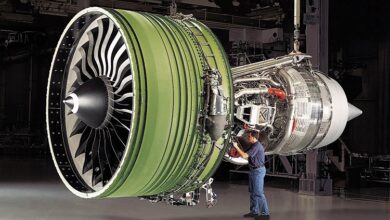What Are the Safety Concerns with Elevators in High-Rise Buildings
Ensuring Elevator Safety in High-Rise Buildings: Key Concerns and Solutions
Elevators are an essential aspect of high-rise living, but ensuring their safety is crucial, particularly in tall buildings where elevator failures can result in severe consequences. High-rise elevators serve hundreds of people daily and are expected to run smoothly, safely, and efficiently. However, there are specific safety concerns associated with elevators in these towering structures that need careful consideration.
In this article, we’ll explore some of the major safety concerns for elevators in high-rise buildings, the technological advancements that mitigate these risks, and how Nibav home lifts stand out as a safe, secure, and reliable option for modern homes.
Common Elevator Safety Concerns in High-Rise Buildings
Elevators in high-rise buildings face unique challenges due to the height, number of floors, and the frequency of use. The most critical safety concerns include:
1. Mechanical Failures
Elevator breakdowns due to mechanical failures are one of the most common safety concerns in high-rise buildings. Elevators comprise numerous mechanical components that need to function properly to ensure smooth operation. Some issues include:
- Brake failures: Elevators rely on strong, reliable braking systems to stop the car at the correct floor. Any malfunction could cause dangerous drops or unintentional movement.
- Door malfunctions: Elevator doors not closing or opening properly can trap passengers or cause accidents when exiting or entering the elevator.
- Cable wear and tear: Elevators in tall buildings use several cables to suspend the car. Over time, these cables can become worn, and if not maintained, they could snap, leading to disastrous accidents.
2. Power Failures
Power outages can create a serious safety issue for elevators in high-rise buildings, leaving passengers trapped inside. While modern home elevators come with backup power systems and emergency lighting, it can still be a frightening and inconvenient experience for passengers.
- Emergency systems: Reliable elevators must have functioning emergency power systems to ensure the safety of occupants in the case of a sudden power loss.
- Communication issues: Passengers trapped in elevators need clear communication channels to ensure they can contact help quickly.
3. Overloading
Overloading an elevator beyond its designed weight capacity can lead to dangerous situations, including system failure, or the elevator car getting stuck between floors. In crowded high-rise buildings, especially during rush hours, it’s critical for elevators to be equipped with overload sensors that alert passengers and prevent operation until the excess weight is removed.
4. Fire Hazards
In the event of a fire, elevators pose a unique risk. Buildings should be equipped with fire-resistant elevators or systems that automatically shut down elevators in the case of a fire.
- Fire alarms and automatic shutdowns: Modern high-rise elevators are designed to stop operation when a fire is detected, encouraging people to use stairwells instead.
- Emergency ventilation: In case passengers are trapped in a malfunctioning elevator during a fire, elevators should have proper ventilation systems to protect occupants from smoke inhalation.
5. Falls and Sudden Stops
Another safety concern is the possibility of an elevator car free-falling due to mechanical failure or cable breaks. Although rare, the consequences are often severe and even fatal.
- Braking systems: Elevators are designed with advanced braking systems that engage in case the elevator moves too fast or loses control.
- Safety nets and fail-safes: Many elevators feature fail-safe mechanisms to prevent free-falls, ensuring that, even in the worst-case scenario, the passengers remain protected.
6. Security Concerns
Security issues such as unauthorized access to elevator shafts and tampering are also growing concerns in high-rise buildings. With the increased importance of safety, access control systems for elevators are being implemented, allowing only authorized individuals to operate the elevators, particularly to sensitive or restricted areas like penthouses or executive floors.
- Access control: Modern elevator systems use keycards, biometric scanners, or access codes to ensure only authorized people can use the elevator for certain floors.
- Surveillance: Surveillance cameras are often installed in elevators to monitor activity and deter potential security threats.
Modern Solutions for Elevator Safety
Technological advancements have significantly improved elevator safety in high-rise buildings. These innovations ensure that elevators are not only more secure but also more user-friendly and efficient. Some of the most notable solutions include:
1. Smart Elevator Technology
Smart elevators are becoming the new standard in high-rise buildings. These systems use artificial intelligence and advanced algorithms to optimize travel time, prevent overcrowding, and enhance safety.
- Predictive maintenance: Smart elevators are equipped with sensors that monitor the condition of mechanical parts and notify building managers of any potential issues before they lead to a breakdown.
- Emergency response: Smart systems can automatically trigger emergency protocols in case of an issue, such as sudden stops or power failures, to ensure passengers are not stranded.
2. Advanced Safety Features
Modern elevators come equipped with numerous safety features that reduce the risk of accidents and mechanical failure. These include:
- Automatic leveling systems: Ensure that elevators stop precisely at each floor, reducing the risk of tripping.
- Overload protection: Prevents the elevator from moving when it is overloaded, alerting passengers to reduce the weight.
- Seismic sensors: High-rise elevators in seismic zones are equipped with sensors to detect tremors and stop operation to prevent accidents during earthquakes.
3. Backup Power Systems
In case of power outages, modern elevators are equipped with backup power sources, allowing them to reach the nearest floor and let passengers out safely. These systems also maintain essential emergency features like lights and communication systems.
How Nibav Home Lifts Address Safety Concerns
Nibav home lifts are designed with safety at the forefront, especially for residential buildings, ensuring that your vertical transportation is reliable, secure, and convenient. Here are some key features of Nibav lifts that address common safety concerns in high-rise elevators:
1. Self-Sustaining Vacuum Technology
Nibav home lifts use cutting-edge vacuum technology, which means fewer moving parts and reduced chances of mechanical failures. The simple yet efficient design offers a safer ride compared to traditional cable-driven elevators.
2. Safety Compliance
Nibav lifts comply with international safety standards and come equipped with emergency braking systems, overload sensors, and fire-resistant materials, making them one of the safest options in the market.
3. Backup Power Systems
Nibav home lifts come with built-in battery backup systems, ensuring that even in the event of a power outage, passengers can safely exit the lift without the risk of being trapped.
4. Emergency Communication
All Nibav home lifts are fitted with an emergency communication system, ensuring that passengers can easily contact help in case of any issues.
Conclusion
Elevator safety in high-rise buildings is paramount for residents, employees, and visitors alike. From mechanical failures to security risks, high-rise elevators present unique challenges that must be addressed with modern technology and rigorous safety protocols. Nibav home lifts offer a combination of advanced safety features, smart technology, and user-friendly design to ensure that your residential or commercial building is equipped with a reliable and safe vertical transportation solution.
For more information on how Nibav home lifts can enhance safety in your home, contact our team today.



